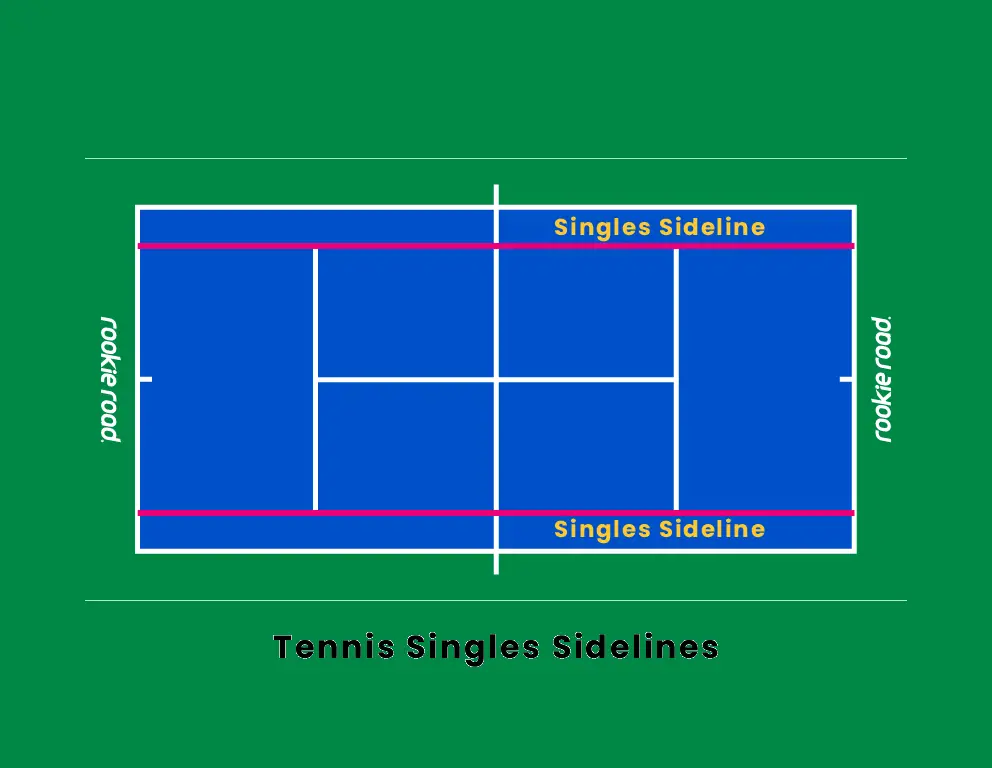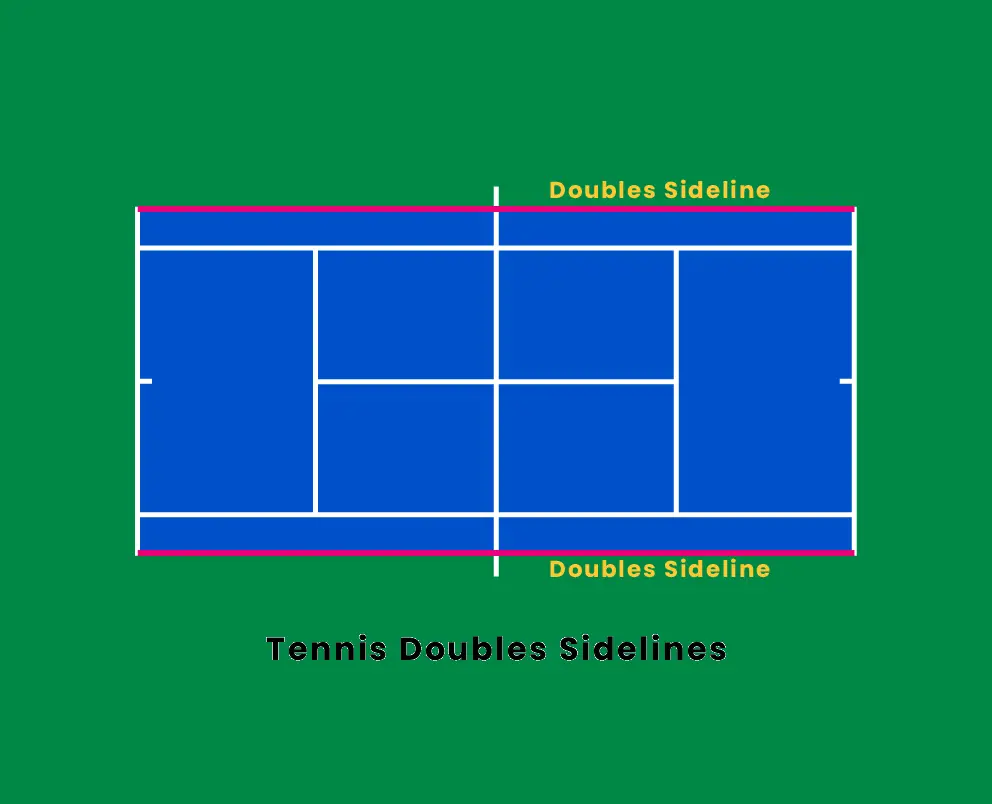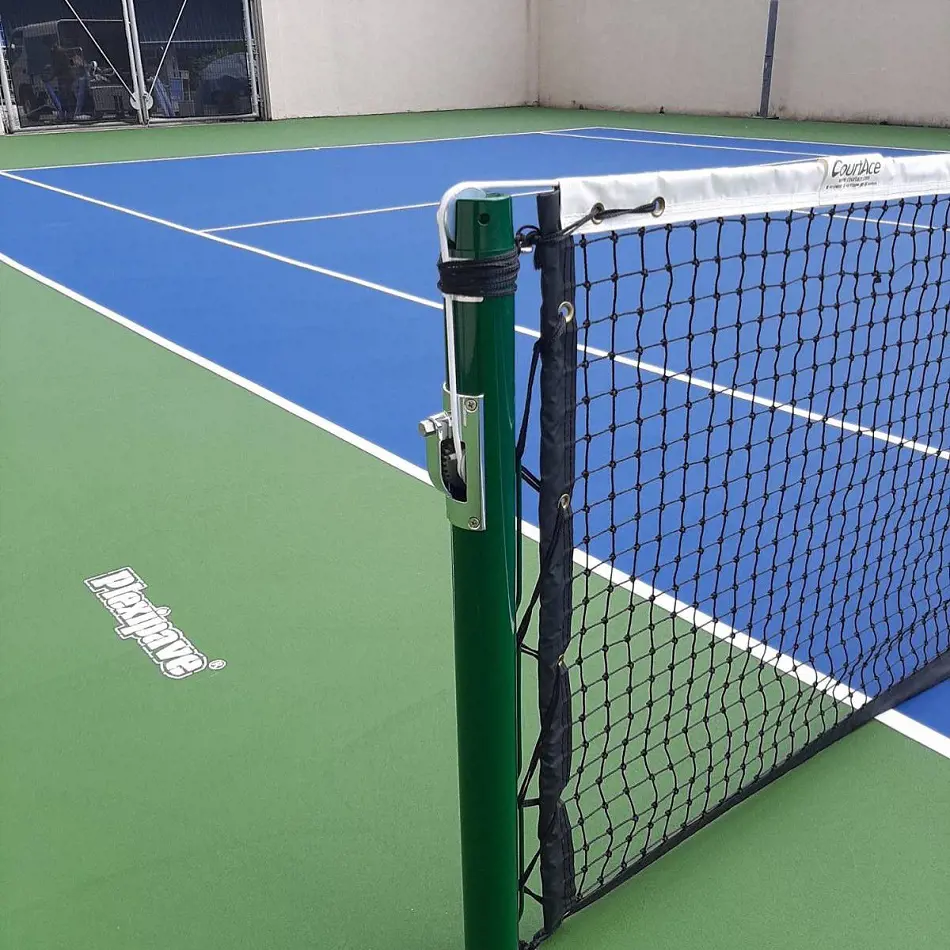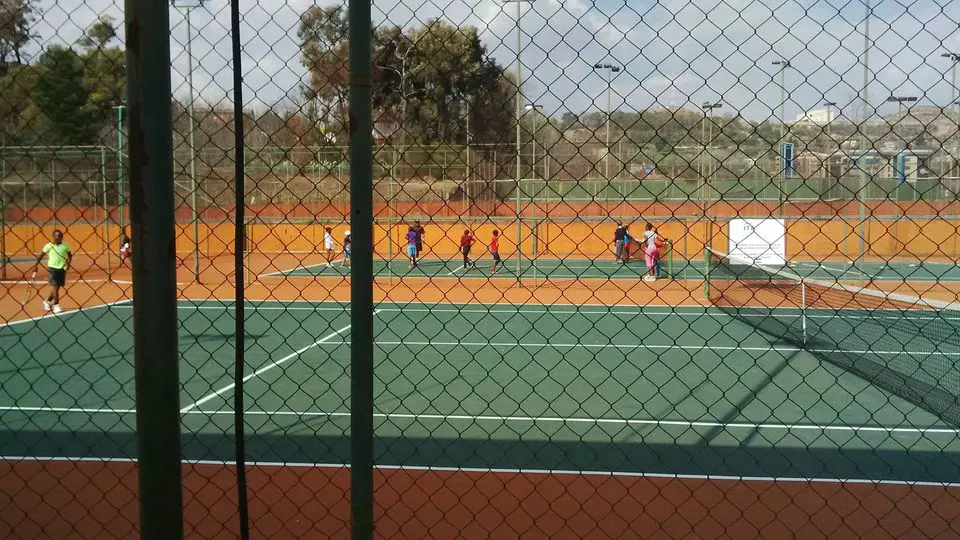Tennis, a sport known for its dramatic rallies and strategic plays, requires players to be precise and skilled.
The tennis court, a beautifully designed playing surface that serves as the platform for athletic excellence and competitive intensity, is central to the heart of this intriguing game.
Tennis court dimensions are not chosen at random; rather, they are rigorously defined to guarantee a fair and demanding environment for players. The length of tennis court is 78 feet i.e. 23.77 meters.
The dimensions of a tennis court, from the baseline to the net, and from sideline to sideline, comply with international standards that have evolved throughout time.
Understanding the size of a tennis court is more than just a technical exercise; it is an appreciation for the basis upon which the sport's excitement and strategy play out.
Tennis Court Dimensions

Dimensions for tennis courts are regulated to ensure consistency and fairness across all levels of play. International regulatory bodies, such as the International Tennis Federation (ITF), define the specifications for a tennis court.
The tennis court dimensions in feet and meters are:
-
Court Length:
The tennis court length and size of tennis court is 78 feet i.e. 23.77 meters.
-
Court Width:
The overall width of a tennis court is 36 feet i.e. 10.97 meters.
-
Singles Court Width:
For singles matches, the court width is 27 feet i.e. 8.23 meters. The reduction in width allows players to cover the court more effectively, considering there is only one player on each side.
-
Doubles Court Width:
Likewise, for doubles matches, the court retains its full 36-foot width, accommodating the larger playing area needed when there are 2 players on each side. -
Baseline:
The baseline is the back boundary of the court, and it runs parallel to the net. It is 39 feet i.e. 11.89 meters long.
-
Service Boxes:
There are two service boxes on each side of the net. Each service box is 21 feet i.e. 6.4 meters long and extends from the net to the baseline.
-
Net Height:
The net is suspended across the center of the court, dividing it into two halves. The net is 3 feet i.e. 0.91 meters in height at the center.
-
Net Post Height:
The net posts are positioned at the doubles sidelines, and the tops of the posts are 3.5 feet i.e. 1.07 meters above the net.
The tennis court lines are explained below:
Baseline

The baseline is tennis court's rear boundary line, spanning from one sideline to the other. It denotes the length of the court and is important for evaluating whether a shot landed within the legal bounds.
The baseline sits furthest from the net, running parallel to it across the width of the court. It is precise location varies slightly:
- Singles: 27 feet (8.23 meters)
- Doubles: 36 feet (10.97 meters)
The baseline runs parallel to the net and sets each side's farthest border, or back of the court. It is the estimated depth for standing to return a serve and where you will strike the majority of your groundstrokes (forehands and backhands) when playing.
Any shots that land beyond the baseline are considered out of bounds.
Center Mark

The Center Mark is a tiny mark located exactly halfway between the net and the baseline on the center service line. It is an important reference point during serves, especially to ensure that players stand behind the service line while serving.
A tennis court's normal length for a center mark is 4 inches (10.16 cm). It's a short line in the center of the baseline that serves mostly as a reference point for the receiving player's location during deuce points.
The Center Mark, when combined with the Service T Line, forms a T-shape that assists players in precisely positioning themselves during serves. From the Center Service Line to the singles sidelines, the Service T Line runs.
Center Service Line

The Center Service Line is a line that runs perpendicular to the net and divides the tennis court into two halves. It runs from the net to the baseline and intersects with the center mark to form a T with the Service T Line.
Players perform their serves in the area between the net and the Service Line. During a serve, players must strike the ball in the opponent's service box, which is bounded by the Service Line, the center service line, and the singles sidelines.
The service line in tennis is the limit of the service box, and services must land within it to be lawful. On each side of the net, there are two service boxes, one for each player.
The Service Line is important in doubles matches because it affects the size of the service boxes for both the serving and receiving players. It specifies where serves must land on both sides of the court.
- Location: 21 feet (6.4 meters) away from the net
Singles Sidelines

The Singles Sidelines are the two outer boundary lines that define the singles court's width. The court is narrower in singles matches than in doubles, and these sidelines represent the legal limitations for the width of the playing area.
The Singles sides extend from the baseline to the net, parallel to the doubles sides, and enclose the playing area for singles matches. They are placed on opposite sides of the court to form a rectangular playing area.
They are linked to the Service Line, which is located 21 feet (6.4 meters) away from the net. These lines describe the service boxes for single play when combined.
- 39 feet (11.89 meters) long
Doubles Sidelines

During doubles matches, the Doubles Sidelines are the two outer boundary lines that determine the width of the tennis court. They run parallel to the single's sidelines and reach to the net.
The Doubles Sidelines, which are located on either side of the court, form a rectangular playing space for doubles matches. During these matches, they determine the legal boundaries for the width of the court.
The full width of the tennis court is used in doubles play, extending 36 feet (10.97 meters) between the Doubles Sidelines. This enlarged playing field accommodates the extra player on each side, providing more room for doubles plans and maneuvers.
While the doubles sidelines tennis are generally used in doubles matches, they also serve as a reference for the overall court width in singles play. The singles court is narrower, with the Singles Sidelines being used instead.
- 39 feet (11.89 meters) long
Net/Net Posts

The Net is a horizontally hanging mesh or fabric thing that divides the tennis court into two parts. The net runs parallel to the baseline and from one sideline to the other.
At the center, the net is 3 feet (0.91 meters) tall. However, it gradually narrows as it approaches the net posts on the sidelines.
The height of the net is controlled by a white strap two inches wide in the center, which is tied to the ground to keep it tight.
The net's main function is to establish a physical barrier between the two sides of the court, making it difficult for players to hit shots directly into the opposing half. To be considered in play, shots must clear the net and land within the legal boundaries.
Similarly, Net Posts are vertical supports that support the net on the doubles sidelines. A tennis court usually has two net posts, one on each side of the net.
The net is connected to these posts, resulting in a taut and flat playing surface. To ensure uniformity among tennis courts worldwide, net posts must meet particular height, thickness, and positioning criteria.
It should fall three feet outside the doubles sideline, directly in the middle of the court, to support the net and provide the correct height on both sides of the court. These net posts will extend three feet beyond the singles sideline. The posts should be no more than six inches wide.
- Height: The tops of the net posts are 3.5 feet i.e. 1.07 meters above the net
Fencing

A tennis court has fencing set up around the full circumference. This serves to define the playing area and prevents tennis balls from leaving the court during play.
Tennis court fencing is normally tall enough to successfully confine tennis balls. The fencing height varies, but it is usually sufficient to keep the balls within the court. Tennis court fencing is commonly made of chain-link, mesh, or solid panels.
Observers should be able to see it well. This might include things like employing mesh or translucent materials that allow spectators to observe the game without being obstructed.
- Height: 8 ft high for residential / 10 ft for club or park










